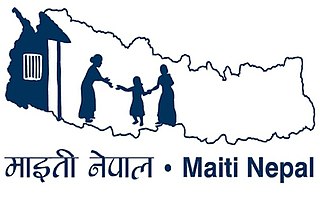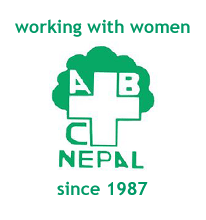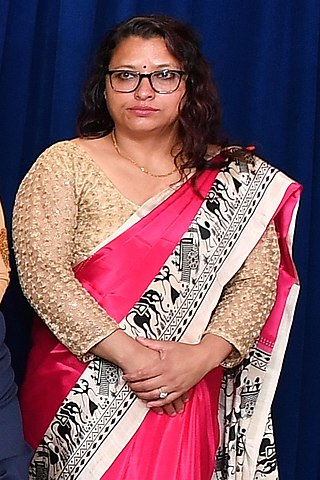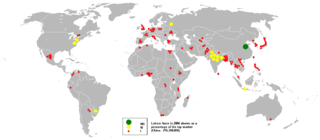
Child prostitution is prostitution involving a child, and it is a form of commercial sexual exploitation of children. The term normally refers to prostitution of a minor, or person under the legal age of consent. In most jurisdictions, child prostitution is illegal as part of general prohibition on prostitution.
With respect to human trafficking, Saudi Arabia was designated, together with Italy, Japan, Turkey, United Arab Emirates, Uruguay, Germany, Greece, Croatia, Israel, Iceland, Norway, and Angola, as a Tier 2 country by the United States Department of State in its 2021 Trafficking in Persons Report required by the Victims of Trafficking and Violence Protection Act of 2000 on which this article was originally based. Tier 2 countries are "countries whose governments do not fully comply with the TVPA’s minimum standards, but are making significant efforts to bring themselves into compliance with those standards". The 2021 report shows some effort by the Kingdom to address the problems, but continues to classify the Kingdom as a Tier 2 country.

Trafficking of children is a form of human trafficking and is defined by the United Nations as the "recruitment, transportation, harboring, and/or receipt" kidnapping of a child for the purpose of slavery, forced labour, and exploitation. This definition is substantially wider than the same document's definition of "trafficking in persons". Children may also be trafficked for adoption.

Sex trafficking is human trafficking for the purpose of sexual exploitation. It has been called a form of modern slavery because of the way victims are forced into sexual acts non-consensually, in a form of sexual slavery. Perpetrators of the crime are called sex traffickers or pimps—people who manipulate victims to engage in various forms of commercial sex with paying customers. Sex traffickers use force, fraud, and coercion as they recruit, transport, and provide their victims as prostitutes. Sometimes victims are brought into a situation of dependency on their trafficker(s), financially or emotionally. Every aspect of sex trafficking is considered a crime, from acquisition to transportation and exploitation of victims. This includes any sexual exploitation of adults or minors, including child sex tourism (CST) and domestic minor sex trafficking (DMST).

In 2022, Freedom House rated Nepal’s human rights at 57 out 100, determining the country's status in terms of fundamental freedoms as "partly free".
Prostitution is illegal in Nepal. The Human Trafficking and Transportation (Control) Act, 2064, Act Number 5 of the Year 2064 (2008), criminalises prostitution and living of the earnings of prostitution by including it in the definition of human trafficking. UNAIDS estimate there to be 67,300 prostitutes in the country.

Human trafficking and the prostitution of children has been a significant issue in the Philippines, often controlled by organized crime syndicates. Human trafficking is a crime against humanity.

Maiti Nepal is a non-profit organization in Nepal dedicated to helping the victims of human trafficking. Currently, it operates a rehabilitation home in Kathmandu, transit homes at the Indo-Nepal border towns, preventive homes in the countryside, and an academy in Kathmandu.
The Child Rescue Nepal is a UK registered charity that promotes children's rights in Nepal. As a result of the work of the Trust it is now illegal to imprison Nepali children alongside their parents or for them to work in Indian circuses. It has recently become one of the pioneers of deinstitutionalisation in Nepal.

Contemporary slavery, also sometimes known as modern slavery or neo-slavery, refers to institutional slavery that continues to occur in present-day society. Estimates of the number of enslaved people today range from around 38 million to 49.6 million, depending on the method used to form the estimate and the definition of slavery being used. The estimated number of enslaved people is debated, as there is no universally agreed definition of modern slavery; those in slavery are often difficult to identify, and adequate statistics are often not available.

India has a very high volume of child trafficking. As many as one child disappears every eight minutes, according to the National Crime Records Bureau. In some cases, children are taken from their homes to be bought and sold in the market. In other cases, children are tricked into the hands of traffickers by being presented an opportunity for a job, when in reality, upon arrival they become enslaved. In India, there are many children trafficked for various reasons such as labor, begging, and sexual exploitation. Because of the nature of this crime, it is hard to track; due to the poor enforcement of laws, it is difficult to prevent. As such, there are only vague estimates of figures regarding the issue. India is a prime area for child trafficking to occur, as many of those trafficked are from, travel through or destined to go to India. Though most of the trafficking occurs within the country, there is also a significant number of children trafficked from Nepal and Bangladesh. There are many different causes that lead to child trafficking, with the primary reasons being poverty, weak law enforcement, and a lack of good quality public education. The traffickers that take advantage of children can be from another area in India, or could even know the child personally. Children who return home after being trafficked often face shame in their communities, rather than being welcomed home.
Afghanistan is one of the source, transit, and destination country for men, women, and children who are subjected to trafficking in persons, specifically forced labor and forced prostitution. Trafficking within Afghanistan is more prevalent than transnational trafficking, and the majority of victims are children. In 2005 the Afghan Independent Human Rights Commission (AIHRC) reported 150 child trafficking cases to other states. Afghan boys and girls are trafficked within the country and into Iran, Pakistan and India as well as Persian gulf Arab states, where they live as slaves and are forced to prostitution and forced labor in brick kilns, carpet-making factories, and domestic service. In some cases the boys and girls were used for organ trafficking. Forced begging is a growing problem in Afghanistan; Mafia groups organize professional begging rings. Afghan boys are subjected to forced prostitution and forced labor in the drug smuggling industry in Pakistan and Iran. Afghan women and girls are subjected to forced prostitution, arranged and forced marriages—including those in which husbands force their wives into prostitution—and involuntary domestic servitude in Pakistan and Iran, and possibly India. Non-governmental organizations (NGOs) report that over the past year, increasing numbers of boys were trafficked internally. Some families knowingly sell their children for forced prostitution, including for bacha bazi - a practice combining sexual slavery and child prostitution, through which wealthy men use harems of young boys for social and sexual entertainment. Other families send their children with brokers to gain employment. Many of these children end up in forced labor, particularly in Pakistani carpet factories. NGOs indicate that families sometimes make cost-benefit analyses regarding how much debt they can incur based on their tradable family members.
Transnational efforts to prevent human trafficking are being made to prevent human trafficking in specific countries and around the world.
Human trafficking in Nepal is a growing criminal industry affecting multiple other countries beyond Nepal, primarily across Asia and the Middle East. Nepal is mainly a source country for men, women and children subjected to the forced labor and sex trafficking. U.S. State Department's Office to Monitor and Combat Trafficking in Persons placed the country in "Tier 2" in 2017.
Chad is a source and destination country for children subjected to trafficking in persons, specifically conditions of forced labor and forced prostitution. The country's trafficking problem is primarily internal and frequently involves parents entrusting children to relatives or intermediaries in return for promises of education, apprenticeship, goods, or money; selling or bartering children into involuntary domestic servitude or herding is used as a means of survival by families seeking to reduce the number of mouths to feed. Child trafficking victims are primarily subjected to forced labor as herders, domestic servants, agricultural laborers, or beggars. Child cattle herders follow traditional routes for grazing cattle and at times cross ill-defined international borders into Cameroon, the Central African Republic (CAR), and Nigeria. Underage Chadian girls travel to larger towns in search of work, where some are subsequently subjected to prostitution. Some girls are compelled to marry against their will, only to be forced by their husbands into involuntary domestic servitude or agricultural labor. In past reporting periods, traffickers transported children from Cameroon and the CAR to Chad's oil producing regions for commercial sexual exploitation; it is unknown whether this practice persisted in 2009.

Agroforestry, Basic Health, and Cooperative Nepal is a nonprofit, non governmental organisation working in Nepal that focuses on women's rights and works against human trafficking in Nepal. Created in 1987, ABC Nepal was among the first Non Governmental Organisations established in Nepal. It was registered soon after the introduction of Nepalese multiparty democracy in 1991. The president of the organisation is Durga Ghimire.

Sunita Danuwar, is a Nepalese human rights activist and the founder of Sunita Foundation and Shakti Samuha, a non-governmental organization based in Nepal formed by women rescued from brothels in India that works against the trafficking of women.
Gender inequality in Nepal refers to disparities and inequalities between men and women in Nepal, a landlocked country in South Asia. Gender inequality is defined as unequal treatment and opportunities due to perceived differences based solely on issues of gender. Gender inequality is a major barrier for human development worldwide as gender is a determinant for the basis of discrimination in various spheres such as health, education, political representation, and labor markets. Although Nepal is modernizing and gender roles are changing, the traditionally patriarchal society creates systematic barriers to gender equality.

Nepal has a labour force of 16.8 million workers, the 37th largest in the world as of 2017. Although agriculture makes up only about 28 per cent of Nepal's GDP, it employs more than two-thirds of the workforce. Millions of men work as unskilled labourers in foreign countries, leaving the household, agriculture, and raising of children to women alone. Most of the working-age women are employed in the agricultural sector, contributions to which are usually ignored or undervalued in official statistics. Few women who are employed in the formal sectors face discrimination and significant wage gap. Almost half of all children are economically active, half of which are child labourers. Millions of people, men, women and children of both sexes, are employed as bonded labourers, in slavery-like conditions. Trade unions have played a significant role in bringing about better working conditions and workers' rights, both at the company level and the national government level. Worker-friendly labour laws, endorsed by the labour unions as well as business owners, provide a framework for better working conditions and secure future for the employees, but their implementation is severely lacking in practice. Among the highly educated, there is a significant brain-drain, posing a significant hurdle in fulfilling the demand for skilled workforce in the country.







